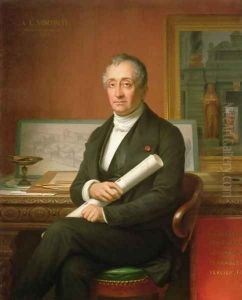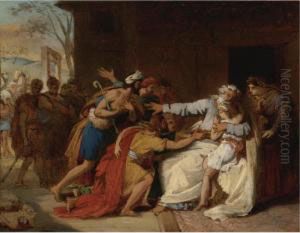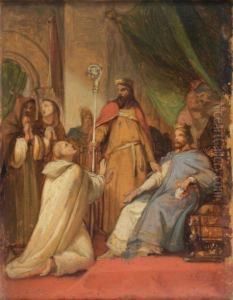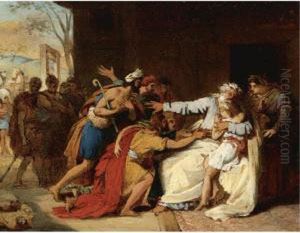Theophile Auguste Vauchelet Paintings
Théophile Auguste Vauchelet was a French painter and lithographer known for his religious and genre scenes. Born on February 19, 1802, in Paris, Vauchelet initially trained under his brother, the sculptor Nicolas-Auguste Vauquelin, and later, he became a student of the esteemed painters François-André Vincent and Jacques-Louis David.
Vauchelet's early works were largely influenced by Neoclassicism, reflecting the teachings of his mentors, especially the classical and historical subjects favored by David. However, as his career progressed, he began to incorporate more romantic elements into his work, following the broader shift in the art world during the 19th century.
Despite not being as widely known as some of his contemporaries, Vauchelet achieved a degree of success and recognition in his time. He exhibited at the Paris Salon, an official art exhibition of the Académie des Beaux-Arts in Paris, and received a third-class medal in 1831 and a second-class medal in 1839. His religious works were particularly appreciated, and he received commissions for church decorations and for religious works from private patrons.
Vauchelet's genre scenes often depicted the lives of the common people, imbued with a sense of empathy and social awareness. These works resonated with the public and critics alike, as they offered a glimpse into the everyday experiences of individuals during a period of significant social and economic change in France.
Throughout his career, Vauchelet also worked as a lithographer, a printmaking technique that was popular at the time. His lithographs allowed for the wider dissemination of his work and contributed to his reputation.
Théophile Auguste Vauchelet passed away on June 17, 1873, in Paris. While he may not have achieved the lasting fame of some of his peers, his contributions to French art during the 19th century remain noteworthy, particularly in the realms of religious painting and social genre scenes. His works continue to be studied and appreciated for their technical skill and for the window they provide into the era in which he lived and worked.



